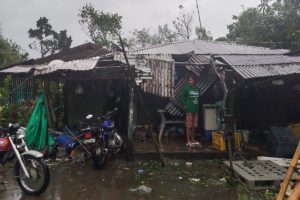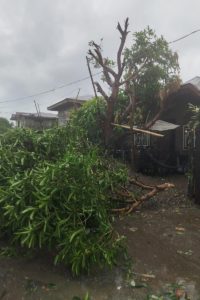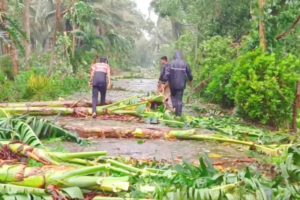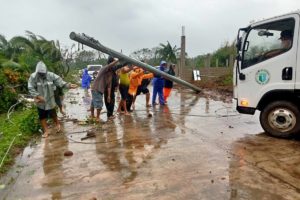The Philippine government ordered the evacuation of 2,500 villages on Sunday in response to the country’s fourth severe storm of the month.
According to AFP, people sought refuge, ports were stopped, and landslides blocked mountain roads on Monday as the disaster-ravaged country faced yet another cyclone.
According to the National Weather Office, Typhoon Toraji made landfall on Monday morning close to Dilasag town, which is roughly 220 kilometres northeast of the capital.
“There is a lot of rain and strong winds. The civil defence head of Dinalungan town, which is close to Dilasag, Merwina Pableo, told AFP that the electricity had been out since yesterday due to some fallen trees.
Eleven hours after the typhoon ripped across the rocky interior of Luzon, local rescuers told AFP that no injuries had been confirmed.
According to them, at least 8,000 people had been evacuated from areas in Aurora, Isabela, Ifugao, and Mountain Province that were vulnerable to landslides and the shore.
On Sunday, the government ordered the evacuation of 2,500 settlements, although the National Disaster Office has yet to publish a complete tally of evacuees as of Monday.
The typhoon weakened significantly when it passed the Luzon mountain ranges, heading for Abra and Ilocos Sur provinces at 120 kilometres per hour. The National Weather Service predicts that it will exit into the South China Sea on Monday night.
Heavy rainfall caused landslides in the Cordillera mountain range, burying three main roadways, according to a civil defence officer.
A passenger boat came aground in strong seas off Romblon, but the coast guard reported that all 156 passengers and 38 crew members were successfully recovered.
The national weather agency had issued a warning of high winds and “intense to torrential” rains in northern parts, with totals topping 200 mm over 24 hours.
Glenn Balanag, a 31-year-old schoolteacher in Dilasag, caught film of the 130-kilometer-per-hour winds that rocked coconut palms near his rural home.
“Large trees are falling, and we have heard that roofs have been damaged. “The rain continues, and a nearby river rises,” he told AFP.
Stranded –
The weather service also warned of a “moderate to high risk of storm surge,” with waves as high as three metres forecast along the north coast until Tuesday.
Schools and government offices in high-risk areas were closed as the storm moved forward.
Almost 700 passengers were stuck at ports in the storm’s route, and authorities warned that “sea travel is risky for all types of vessels.”
Elson Egargue, Aurora’s emergency response chief, told AFP that teams were dispatched to clean roads after Toraji left the province in the early afternoon.
A tropical depression might strike the area as early as Thursday night, according to weather forecaster Veronica Torres, who spoke to AFP after Toraji.
Furthermore, next week, Tropical Storm Man-yi, which is now east of Guam, may make landfall in the Philippines.
Toraji follows three cyclones that killed 159 people in less than a month.
Homes and buildings were damaged as Typhoon Yinxing made landfall on the northern coast last Thursday.
One instance resulted in the death of a 12-year-old girl.
According to earlier reports from the National Disaster Service, Super Typhoon Kong-Rey and Severe Tropical Storm Trami were the main causes of the deaths, with 158 fatalities.
Every year, about 20 powerful storms and typhoons make landfall in the Philippines.
According to recent studies, climate change is causing storms in the Asia-Pacific area to form closer to coastlines, intensify more quickly, and last longer over land.






